- | 8:00 am
The fascinating history of handheld video games
From the Game Boy to the Switch, the most innovative video games are the ones that can fit in our pockets.
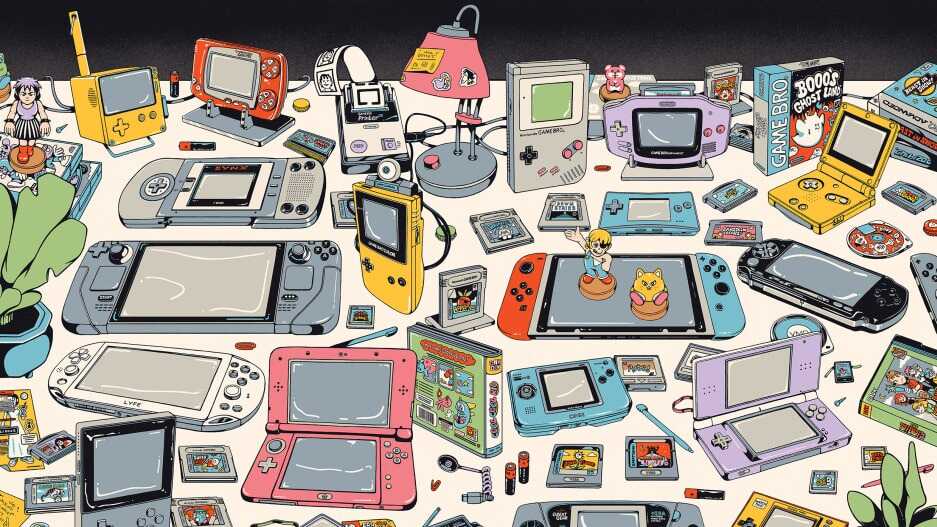
Video games have long been maligned as mindless media—shallow entertainment for kids (or adults with too much free time on their hands).
But hey, cinema was in the same boat for decades before it was finally taken seriously as an art form, worthy of critical analysis and academic study in the 1960s. So when it comes to video games, Lost in Cult CEO and creative director Jon Doyle puts us somewhere in the metaphorical late ’50s.
“We’re now reaching a point where games are going to be taken a lot more seriously culturally,” he says. “It’s effectively the biggest medium in the world at this stage. It deserves to be preserved, and it deserves to be respected as more than just a plaything.”
For Doyle, it’s personal. Growing up, he had severe dyslexia—and in the absence of traditional story experiences on paper, he thrived on the rich worlds of interactive media like video games. During the pandemic, while on the hunt for some high-end books about video games, he discovered a dearth instead. So he launched his imprint, Lost in Cult, to fill the void. After Kickstarting a video game journal called Lock-On and selling a few hundred copies, things snowballed, and today the journal (now on its fifth issue) has sold more than 50,000 copies.
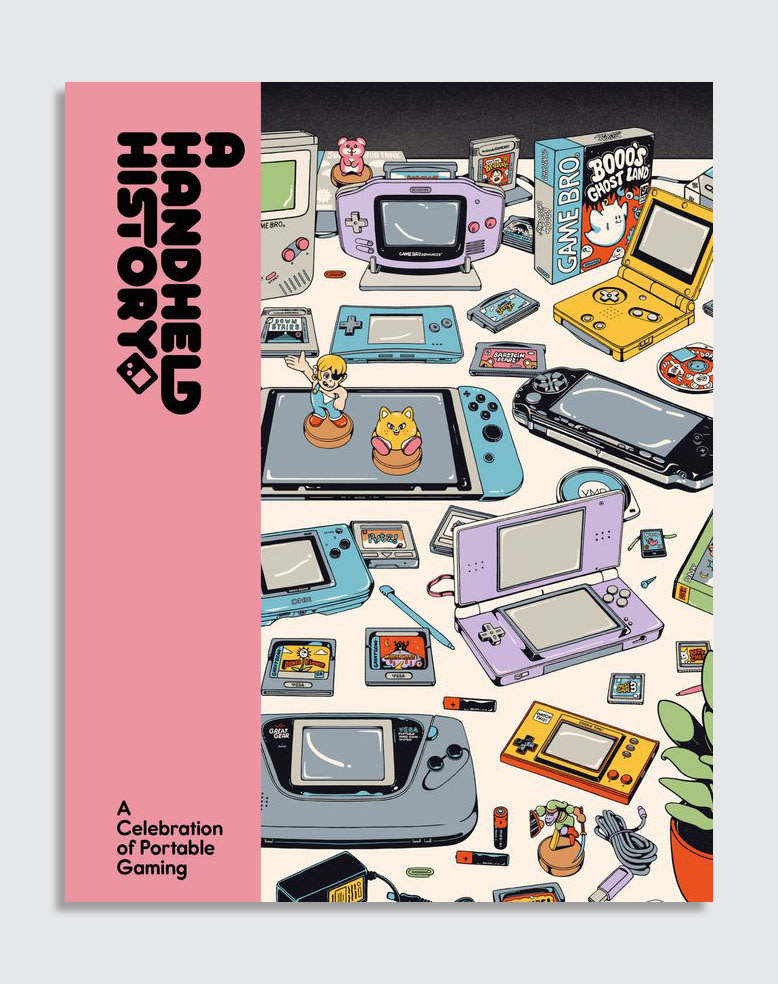
Along the way his book-publishing plans came to fruition—and today HarperCollins is releasing A Handheld History: A Celebration of Portable Gaming, which Lost in Cult created in partnership with Retro Dodo.
In the wake of cutting-edge blockbuster systems like the Xbox Series X and the Playstation 5, the humble handheld might seem like an odd subject for the book treatment. But as Doyle and A Handheld History detail, it’s where innovation in video games has utterly thrived. And that’s by design—or rather, design constraints, given their diminutive form factors.
“When you’re restricted by hardware power, you tend to come up with more creative ways to adapt,” Doyle says.
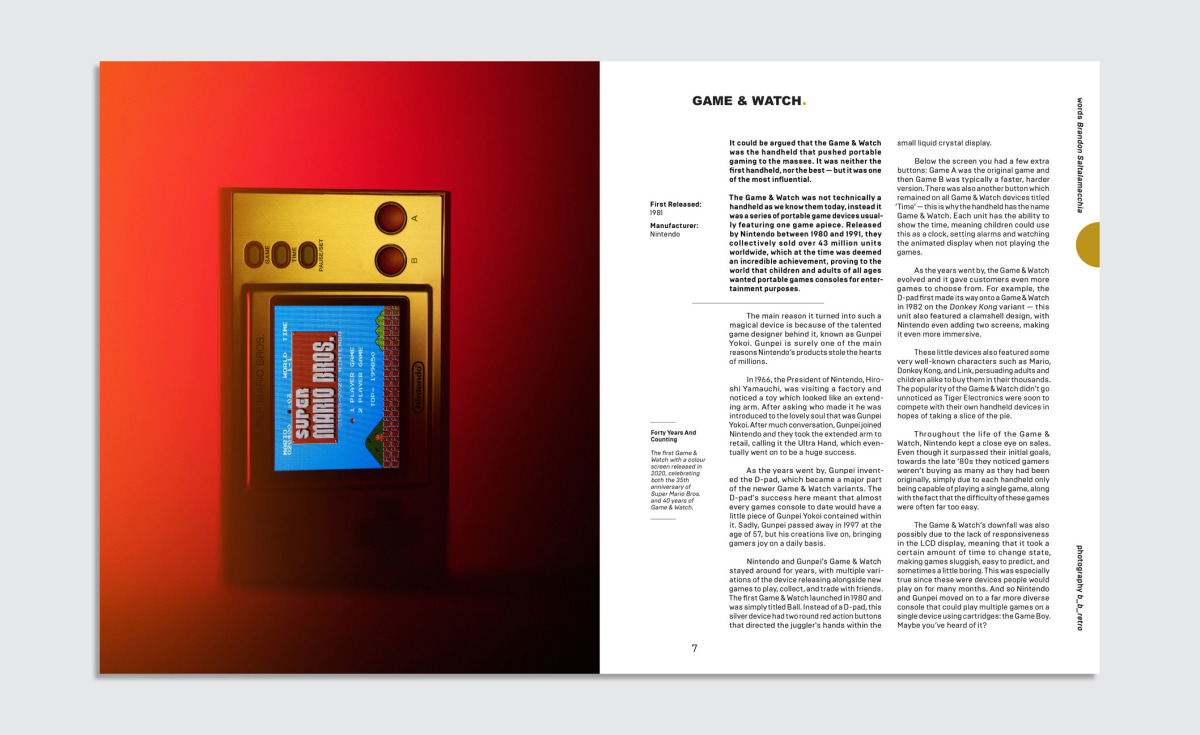
NAVIGATING THE BLUE OCEAN
As for the early game system that helped change the game, the story goes that legendary Nintendo creative Gunpei Yokoi was in the doldrums of a train ride and was inspired by a businessman fidgeting with a calculator; in another telling, Gunpei took notice of an oversaturated calculator market rife with cheap LCDs and other components, and figured out how to thrive within it. Either way, it led to the development of the Game & Watch handhelds in the early ’80s, a series of devices that each contained a single dedicated video game, such as Donkey Kong. That eventually gave way to the Gunpei-designed Game Boy, the groundbreaking gray brick that allowed users to swap games in and out. With a robust library of titles and powerful branding and marketing behind it, it came out at exactly the right time in 1989 to ride the wave of the burgeoning home-gaming industry.
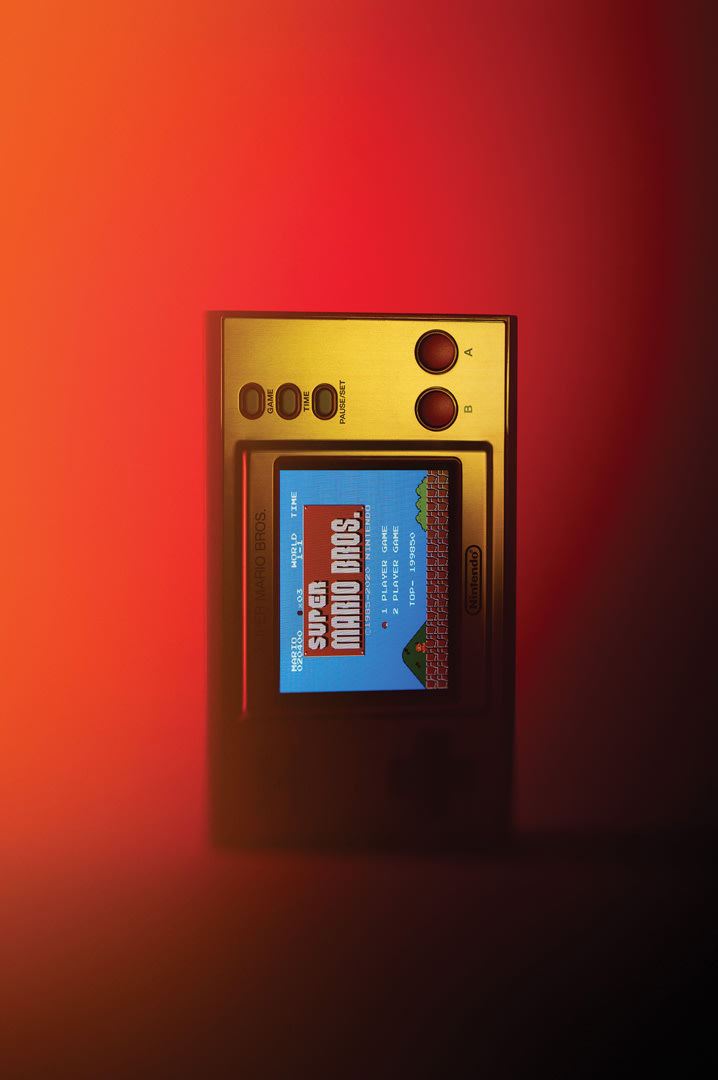
From among all the devices surveyed in A Handheld History that followed, Doyle has an immediate response as to which was the most innovative: the Nintendo DS (2004), the “DS” standing for dual screen.
For Doyle, it harkens back to Nintendo’s “Blue Ocean” strategy—which the company adopted in the early aughts to stop competing for the same target consumers in a crowded graphics-obsessed gaming market with the likes of Microsoft and Sony, and set sail on their own waters. For consoles, this meant the off-the-wall, completely-bonkers-the-first-time-you-experience-it Wii, and the DS—outfitted with two screens, a microphone, and other bells and whistles wholly new to the category. Doyle says Nintendo’s goal was to expand its reach to nontraditional gamers, and it did just that with the DS thanks to games like the pet simulator Nintendogs, the “Personal Trainer” series, and offerings like Brain Age.
“These dragged a whole new audience into the medium, and they kind of really helped set handheld gaming as more of a cultural thing,” Doyle says.
The larger playground of possibility in handhelds has long been rife with experimentation. And that has led to some glorious failures and anomalies—which Doyle says he encouraged his team to capture in the book. The more obscure, the better.

Such as, say, the Game Boy Advance game Boktai, the cartridge of which contained a solar sensor that users had to charge so they could go back inside and kill vampires with a sun gun. Or the Game Boy cartridge containing an entire King James Bible, aptly dubbed King James Bible. Or peripherals like the legendary Game Boy Printer. The Game Boy sewing machine (!). Bondai’s Pocket Sonar that attached to the Game Boy and could be used to, quite literally, find fish in a body of water.
“It’s just unbelievable that this stuff even existed,” Doyle says.
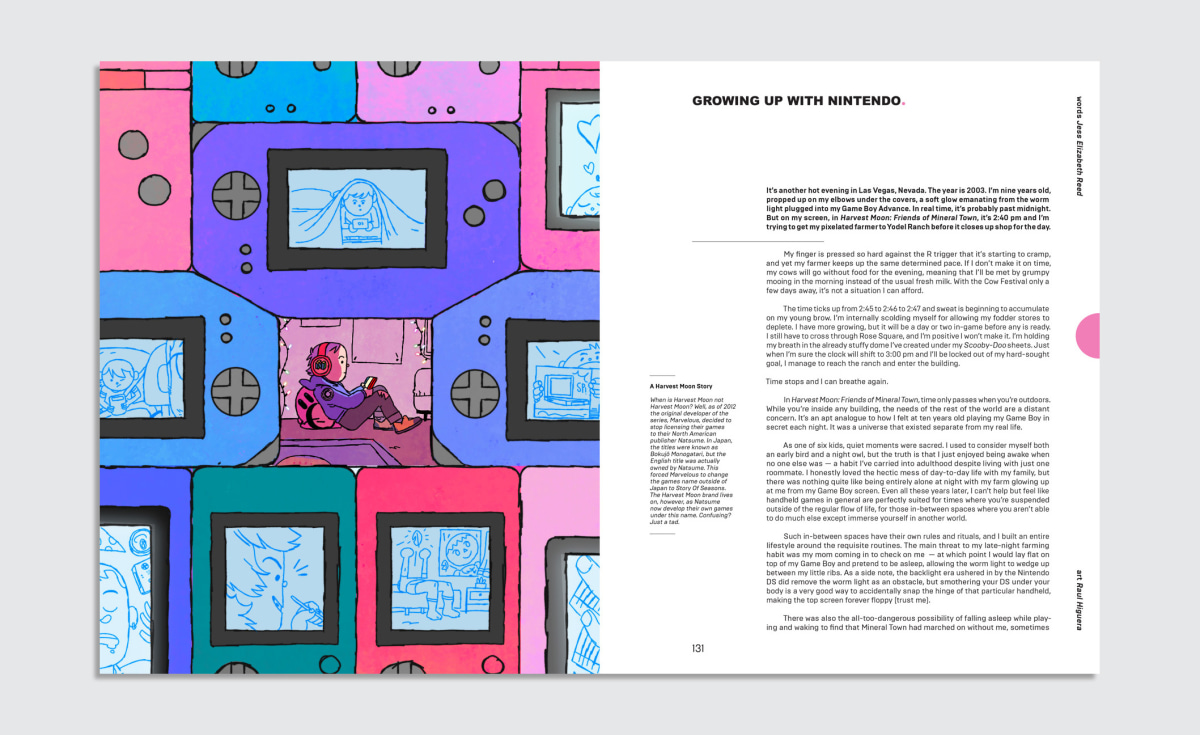
GETTING PERSONAL
When it came to presenting all the systems and games in the book, Doyle says he was aiming for Japanese design principles, and also referenced the way that Sotheby’s curates its catalogs for a gallery-esque feel. Some of the most stunning moments in the book can be found in its presentations of the kaleidoscopic color variations in Game Gears, Switch Joy-Cons, and myriad hardware and systems beyond.
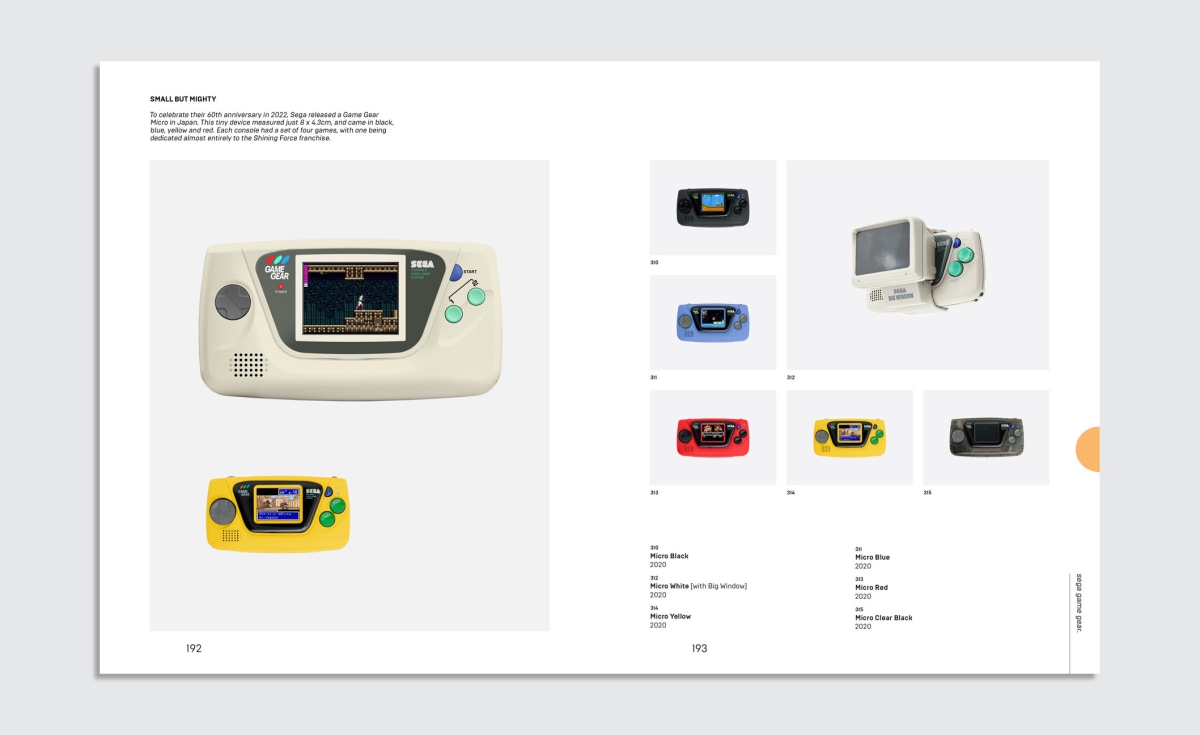
Moreover, A Handheld History brims with life because it doesn’t just present an objective retelling of the history of handhelds, but rather features numerous essays (with bespoke illustration) riffing on personal experiences with the varying devices (“we wanted it to feel like you were walking around an exhibit of people’s lives,” Doyle notes).
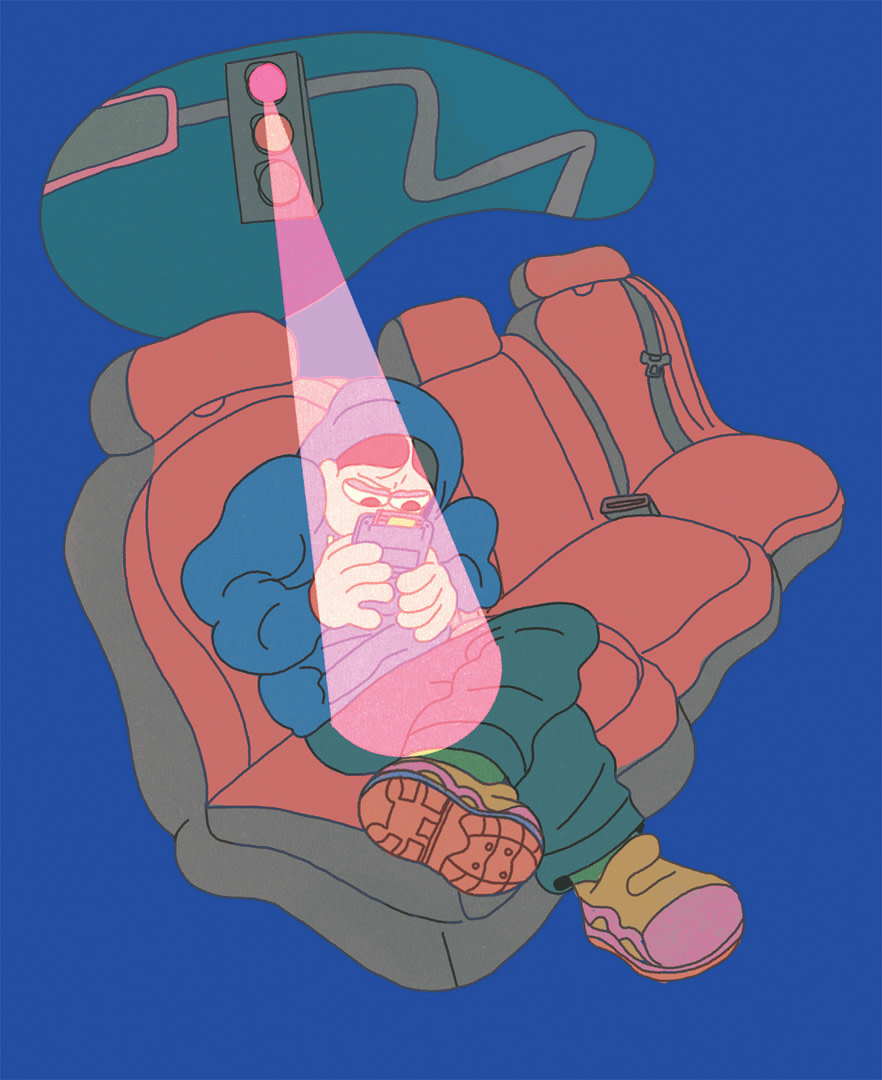
Which all makes sense. Because that’s the thing about handheld video games—more than their bulky TV-dependent counterparts, they are, ultimately, an intimate experience. And that is why they are worth celebrating.
“They’re definitely one of the most personal pieces of electronics in history,” Doyle says. “I have sat in hospital waiting rooms with my Game Boy Advance on; I have been on car journeys, using the beaming traffic lights to try and play games at night. . . . I feel like so many of us have used them as a coping mechanism, as a way of finding a community, finding friends, sharing experiences. They’ve become so personal to so many people because they are so close to our hearts—in our jacket pockets.”





































